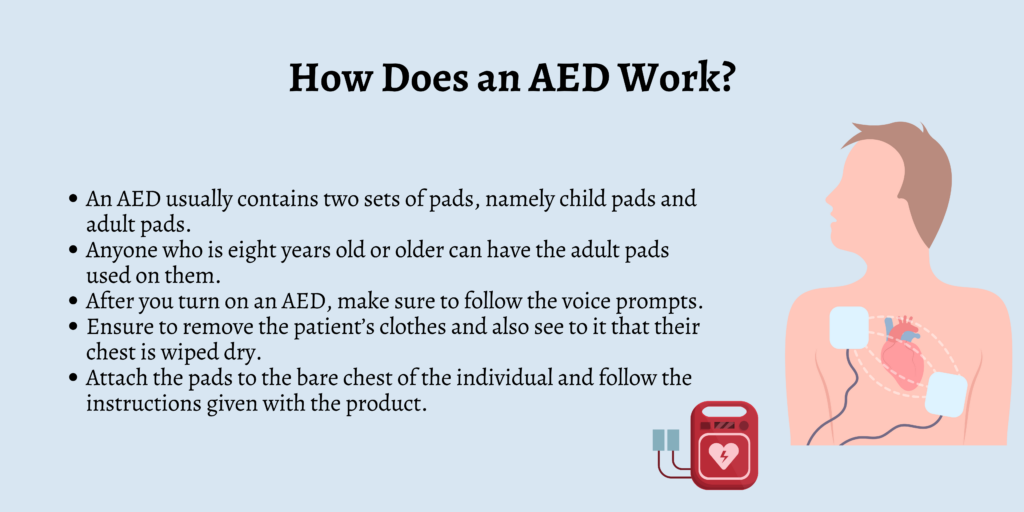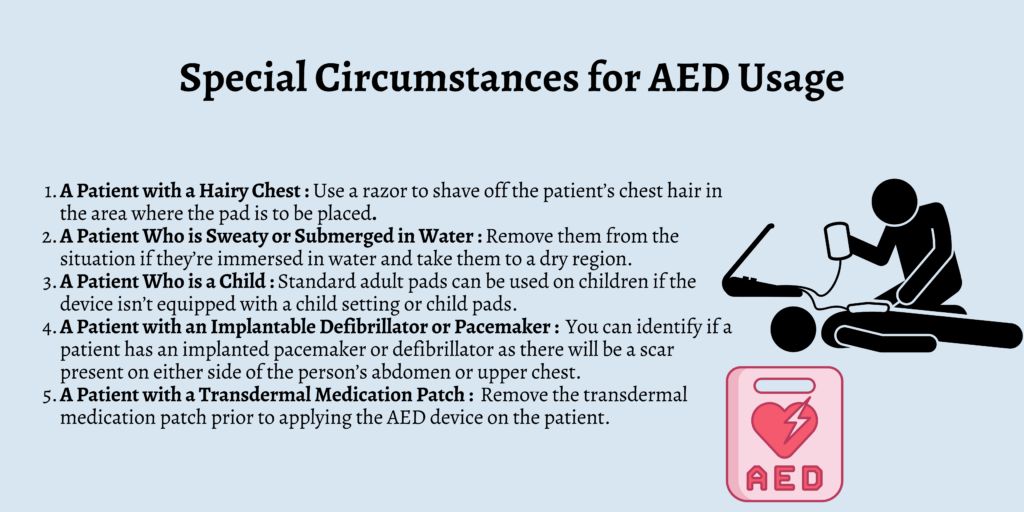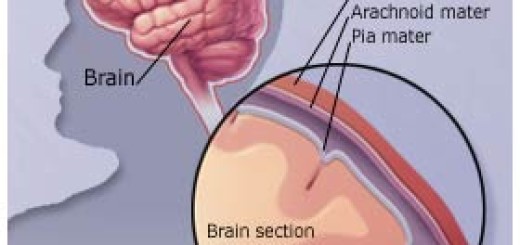AED Special Considerations And Situations
An automated external defibrillator (AED) is a portable and lightweight device that delivers a shock to a patient’s heart through their chest every time there is an abnormal rhythm. Through this, the device helps in bringing the heart’s rhythm back to normal.
They are used whenever a person suffers from a sudden cardiac arrest, which is when the individual’s heart stops beating in a regular manner. If the situation isn’t treated immediately, it can also lead to the death of the concerned patient.There are certain special considerations and situations associated with using an AED, and we will be elaborating on those very considerations in this article.
How Does an AED Work?
Here’s how an AED works:
- An AED usually contains two sets of pads, namely child pads and adult pads.
- Anyone who is eight years old or older can have the adult pads used on them.
- After you turn on an AED, make sure to follow the voice prompts.
- Ensure to remove the patient’s clothes and also see to it that their chest is wiped dry.
- Attach the pads to the bare chest of the individual and follow the instructions given with the product.
Special Circumstances For AED Usage
Listed below are the special conditions when it comes to using an AED:
A Patient with a Hairy Chest
If a patient has a chest that’s excessively hairy, it becomes tricky for the rhythm of their heart to be analyzed by the electrode pad in order to deliver a shock that’s timed appropriately.
Due to chest hair, the pad would be raised off the person’s chest and would not make full contact with the skin. It also becomes difficult for the gel on the pad to stick to the skin in such a circumstance.
The following are the solutions that can help in remedying the situation:
- Use a razor to shave off the patient’s chest hair in the area where the pad is to be placed.
- If a razor isn’t available, the device will ask you to look for pads, in which case you should apply substantial pressure on the pads to increase conductivity.
- Lastly, you can attach the pads quickly to the patient’s chest and then remove them swiftly to get rid of some of the chest hair. You can then apply a fresh set of pads.
A Patient Who is Sweaty or Submerged in Water
Another special situation with regard to using an AED is if a patient is submerged in water or their body is wet or moist from sweating.
Since water is a conductor of electricity, the power of the shock won’t be sufficient to revive the patient, thereby becoming not as effective as it needs to be.
The following are the ways to treat a patient who is submerged in water or sweaty:
- Remove them from the situation if they’re immersed in water and take them to a dry region.
- Wipe away the water and get their chest to become dry.
- Apply the electrode pads to the patient’s chest.
- It’s not necessary to dry off the entire body of the person. Instead, just ensure the area between the pads is completely dry.
A Patient Who is a Child
Although cardiac arrests in children are uncommon, they are not completely unheard of. When a kid weighs below 55 pounds or is below the age of 8, one must administer a reduced electrical shock on them.
While some AEDs come with a special pediatric setting, others are equipped with child electrode pads. This is what you should remember if the patient is a child:
- Standard adult pads can be used on children if the device isn’t equipped with a child setting or child pads.
- There’s a different way of placing the pads on a child compared to placing them on an adult’s chest.
- While one of the pads is required to be placed in the middle of the child’s chest, while the other needs to be placed in the middle of the back.
A Patient with an Implantable Defibrillator or Pacemaker
A shock’s delivery is likely to get blocked if a patient has a pacemaker or implantable defibrillator in their body. Here’s what you should keep in mind if this is the special situation you’re exposed to:
- You can identify if a patient has an implanted pacemaker or defibrillator as there will be a scar present on either side of the person’s abdomen or upper chest.
- They will also have a hard lump either on the left side of their chest or near their heart which can cause a hindrance when it comes to placing the pads properly.
- The pacemaker or whichever device they have on themselves will likely stop working after a person experiences a sudden cardiac arrest, which is why you shouldn’t worry about the device getting damaged.
- While placing the pads on such a patient, be sure to either go for a front-and-back approach or attach them a couple of inches lower than the traditional placement.
A Patient with a Transdermal Medication Patch
Ever since the 1970s, transdermal medication patches have been used for the purpose of delivering active medication, including nicotine and hormones. These patches can present the risk of burns if an AED is to be used on the patient.
Listed below is the way to apply an AED device on such an individual:
- Remove the transdermal medication patch prior to applying the AED device on the patient.
- Wipe away the sticky particles that could remain on the person’s skin.
- Put on a pair of gloves while removing the medication patch so that the medication doesn’t get absorbed into your skin.
FAQs
1. What is an AED used for?
An AED is used when someone suffers from a sudden cardiac arrest.
2. Can AEDs be used by non-medical professionals?
Yes, AEDs can be used by non-medical professionals as well.
3. What are the special situations associated with AEDs?
The special situations associated with AEDs are when the patient is a child, sweaty, submerged in water, hairy, has a pacemaker, or has a transdermal medication patch.
4. Can an AED be used on a child?
Yes, an AED can be used on a child.
5. What is the full form of AED?
The full form of AED is an Automated External Defibrillator.
Conclusion
When AEDs were first developed, the reason behind it was for bystanders and non-medical professionals to be able to use them on patients in cases of an emergency. By knowing how to use an AED, you can end up saving someone’s life in dire circumstances.
In addition to being aware of how an AED works, it’s also crucial to know about the special conditions and considerations that could serve as hurdles against the device from being used.
Just ensure that the AED comes with a razor, pediatric pads, and a pair of gloves before you start using it on a patient. Whenever you encounter doubts while dealing with a patient, start performing chest compressions and immediately contact the emergency medical services.






